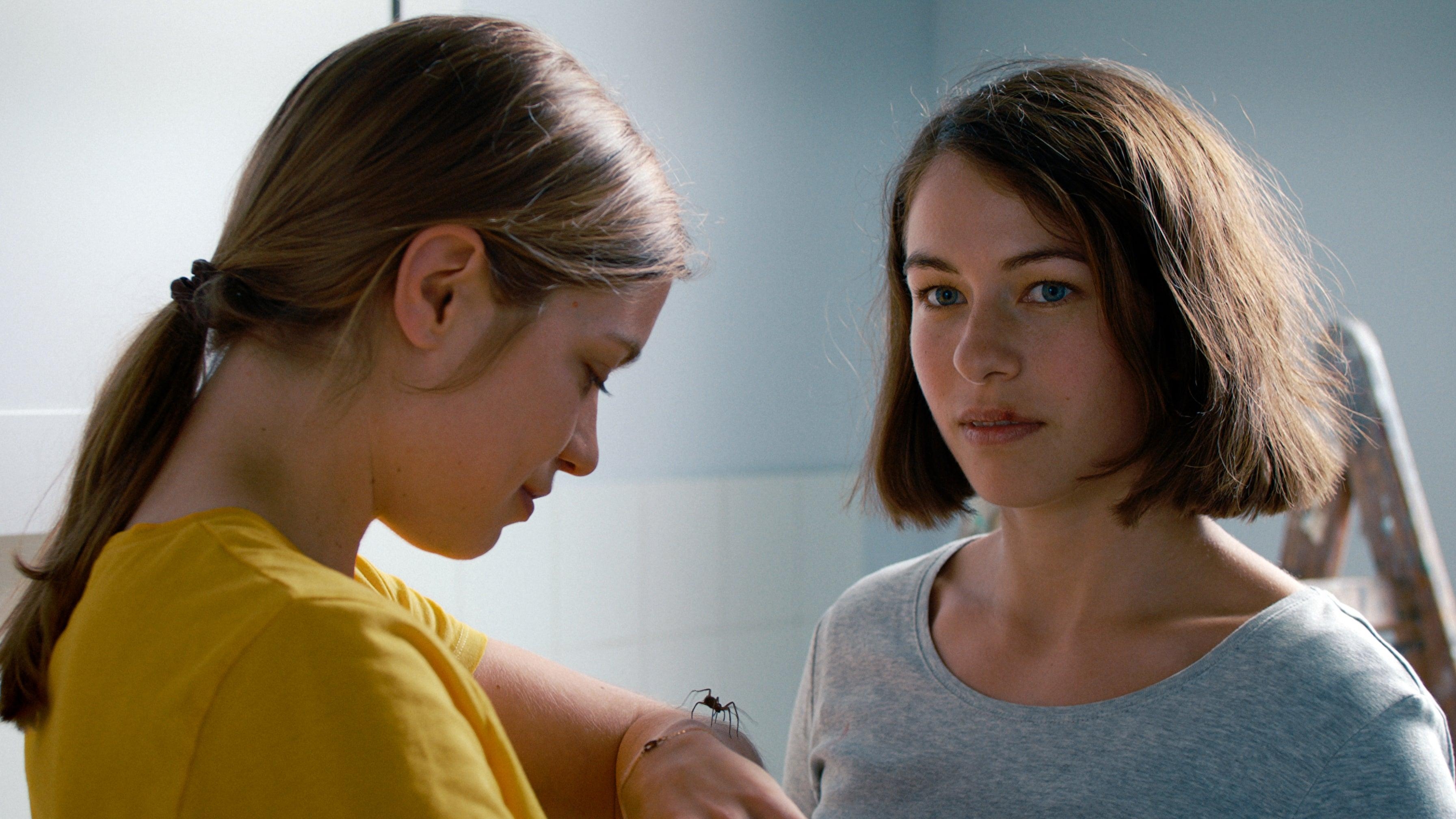In The Girl And The Spider, characters speak volumes without saying very much
A woman’s exit from her shared apartment generates existential angst in Ramon and Silvan Zürcher’s cryptic, delicately observed relationship study

For those who think Alain Resnais’ Last Year At Marienbad is too on-the-nose, here comes The Girl And The Spider, the second film from Swiss director Ramon Zürcher, whose brazenly distinctive style pulls off the miraculous trick of being both thoroughly involving and stubbornly withholding.
Zürcher’s debut film, the unsettling 2013 family saga The Strange Little Cat, felt like a tale told using a bold new storytelling technique; an entire movie about the unarticulated emotions and quiet, reflective moments often ignored in traditional dramas that favor larger, more easily graspable beats. The Girl And The Spider (co-directed by Ramon’s twin brother Silvan) builds on those ideas as a locked-down camera captures the carefully choreographed movements of characters who reveal next to nothing about themselves, yet we sense what they’re feeling in any given moment even if we’re denied any information as to why.
If this sounds opaque and unapproachable, that’s a risk the Zürchers are clearly willing to take. But it pays off in a work of gorgeous stylistic precision where cautious glances and wistful anecdotes melt together to form a melancholy arthouse jewel about the tearing down of one woman’s identity.
That woman is Mara (Henriette Confurius), whose roommate Lisa (Liliane Amuat) is moving out of their shared flat. The full nature of Mara and Lisa’s relationship, like most of the relationships in the film, remains unarticulated but they were probably lovers, something we intuit from the herpes sore that migrates from Mara’s lip to Lisa’s. While a phalanx of family, neighbors, and hired movers scurry around hauling boxes and ladders, suggesting lives in motion, Mara is almost always static. It’s one of the major stylistic cards played by ace cinematographer Alexander Hasskerl, Zürcher’s MVP on The Strange Little Cat.
With dialogue often cryptic and context kept to a precious minimum, clever blocking provides valuable clues as to how characters relate to one another and what they think of each other. Minus a handful of fleeting moments (including two brief scenes that play as ill-advised simulacrums of Wes Anderson’s storybook style), events unfold in mostly empty apartments with Mara and Lisa often facing away from camera or confined to medium shots or close-ups. As characters and props enter frame from the side or even from above, sometimes in a near-abstract blur, there’s a palpable and intoxicating sense that events are happening beyond the gaze of the camera. And the bare walls and empty shelves of Lisa’s new flat create a blank canvas that directs our focus towards the desires, often sexual, of the tight group impacted by Lisa’s move.
Those include Lisa’s mother, Astrid (Ursina Lardi) who’s developing a crush on handyman Jurek (André M. Hennicke), while Jurek’s assistant Jan (Flurin Giger) gets passed around between various women: first to Mara’s neighbor Kerstin (Dagna Litzenberger Vinet), then to erotic “queen of the night,” Nora (Lea Draeger). But the ripple effect of Lisa’s departure primarily upsets the emotional equilibrium of Mara who, like everyone else, doesn’t articulate what she’s feeling and is prone to telling unrelated anecdotes that don’t easily expand on what little we already know. While this inevitably creates a distance between the viewer and the characters, the Zürchers’ detailed visuals and intricate sound design (including repeated use of Eugen Doga’s waltz, Gramophone) keep our synapses firing.
Mara’s feelings of disconnect are expressed externally, while Zürcher keeps viewers engaged through Confurius’ piercing, expressive, glassy blue eyes that can go from longing to contempt in a single shot. At the beginning of the film she conveys a deeply sorrowful sense of loss at Lisa’s departure, but as the furniture and the light fixtures reach their final destination, the inevitability of being ejected from Lisa’s orbit triggers her cruel side. She lashes out by carving a gash into Lisa’s new countertop and pouring hot coffee on a dog (a disturbing echo of Mother hovering her foot over an orange tabby’s head in The Strange Little Cat). Later, she rejects Jan by telling him that only a fly could possibly like him, then killing a nearby fly and declaring, “Now no one likes you.”
With its emotional undercurrents that continually roil just below the surface, The Girl And The Spider meticulously pivots on the idea that life is transitory and everything breaks down. The jackhammer that cracks the cement, the floating feathers of an old down jacket, and the jumbled printout of Mara’s PDF suggest that even the most stable person, place, or thing (or relationship) is subject to decay. The Zürchers, with an expressive lighting cue at the ready, drive this point home with Mara’s story about the beloved spider that would visit her bedroom every night when she was a child. One day the spider disappeared, leaving only a web. Before long, the web would vanish as well. Presumably, the vanishing of Mara from Lisa’s life will result in Lisa’s rebirth, filled with pale blue walls and canary yellow couches. We’re not so sure what’ll happen to Mara. All we know is that the Zürchers aren’t telling.